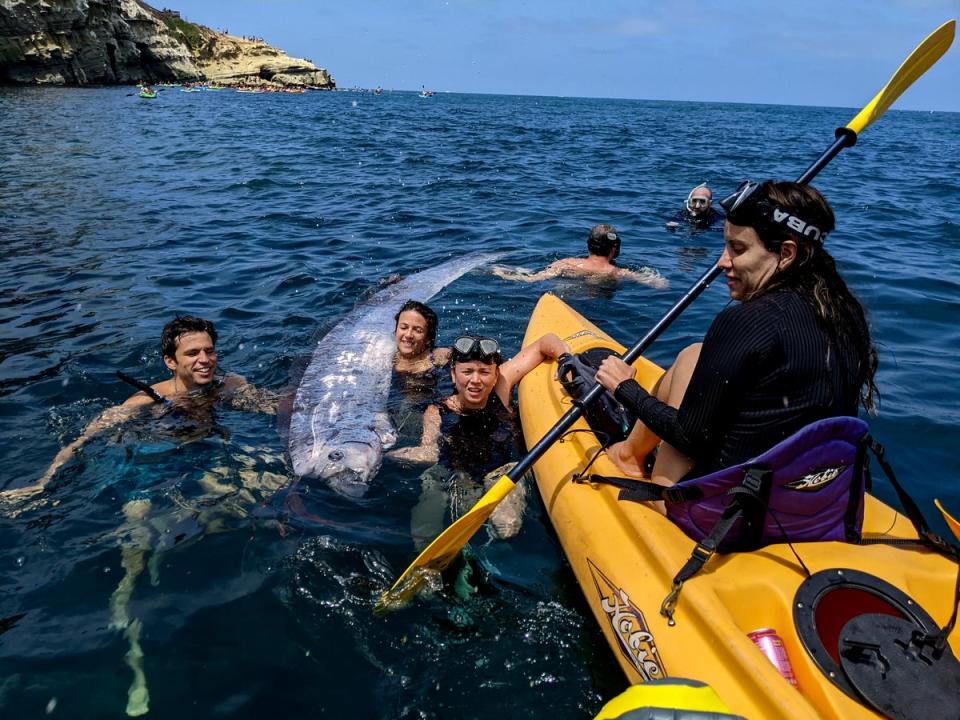A rare deep sea fish, regarded as a harbinger of doom, has washed up on a southern California shore.
The Scripps Institution of Oceanography at the University of California, San Diego, said one of its PhD students discovered an oarfish on a beach in Encinitas last week that was around nine to ten feet long.
The long, ribbon-shaped fish usually inhabit the mesopelagic zone, a region of deep water where light cannot penetrate.
They are often referred to as “doomsday fish” because of their mythical reputation as earthquake or natural disaster predictions. In the months preceding the 2011 earthquake, 20 oarfish were discovered on Japanese beaches.
It is the second time an oarfish has been found in the area this year. Oarfish have only been documented washing up in California 20 times since 1901.
Look what decided to make another appearance! 🌊 Last week, another #oarfish washed up on Grandview Beach in Encinitas and was spotted by Scripps Oceanography PhD candidate Alison Laferriere. This cool creature measures roughly 9 to 10 feet long. pic.twitter.com/gJjc9BBLwc
— Scripps Institution of Oceanography (@Scripps_Ocean) November 13, 2024
Ben Frable, Scripps Marine Vertebrate Collection Manager, said: “Like with the previous oarfish, this specimen and the samples taken from it will be able to tell us much about the biology, anatomy, genomics and life history of oarfishes.”
An oarfish was first found in the area in August. It was around 12ft long and weighed more than 30kg. Scientists didn’t know why the fish washed up where it did, though it is generally thought to be a sign of injury, illness, and disorientation.

In 2013, when two oarfish washed up onto Californian beaches, scientists said they may have died as a result of seismic activity under the seabed that occurs days or weeks before an earthquake.
Another possibility is that before an earthquake there is a release of large quantities of carbon monoxide gas, which could also affect oarfish and other deep-sea creatures.
“Rare encounters like this provide an amazing opportunity to learn more about this species and how it lives,” Mr Frable said in a statement in August.
“We are fortunate to have a large community of researchers and world-class collection that mobilized quickly to examine and preserve this fish.”
Dahiana Arcila, marine biologist and curator of the Marine Vertebrate Collection at Scripps, added: “This oarfish presents a rare opportunity to obtain fresh samples for genomic analysis, allowing us to study the evolutionary adaptations that enable this species to thrive in deep-sea environments.”
EMEA Tribune is not involved in this news article, it is taken from our partners and or from the News Agencies. Copyright and Credit go to the News Agencies, email news@emeatribune.com Follow our WhatsApp verified Channel




